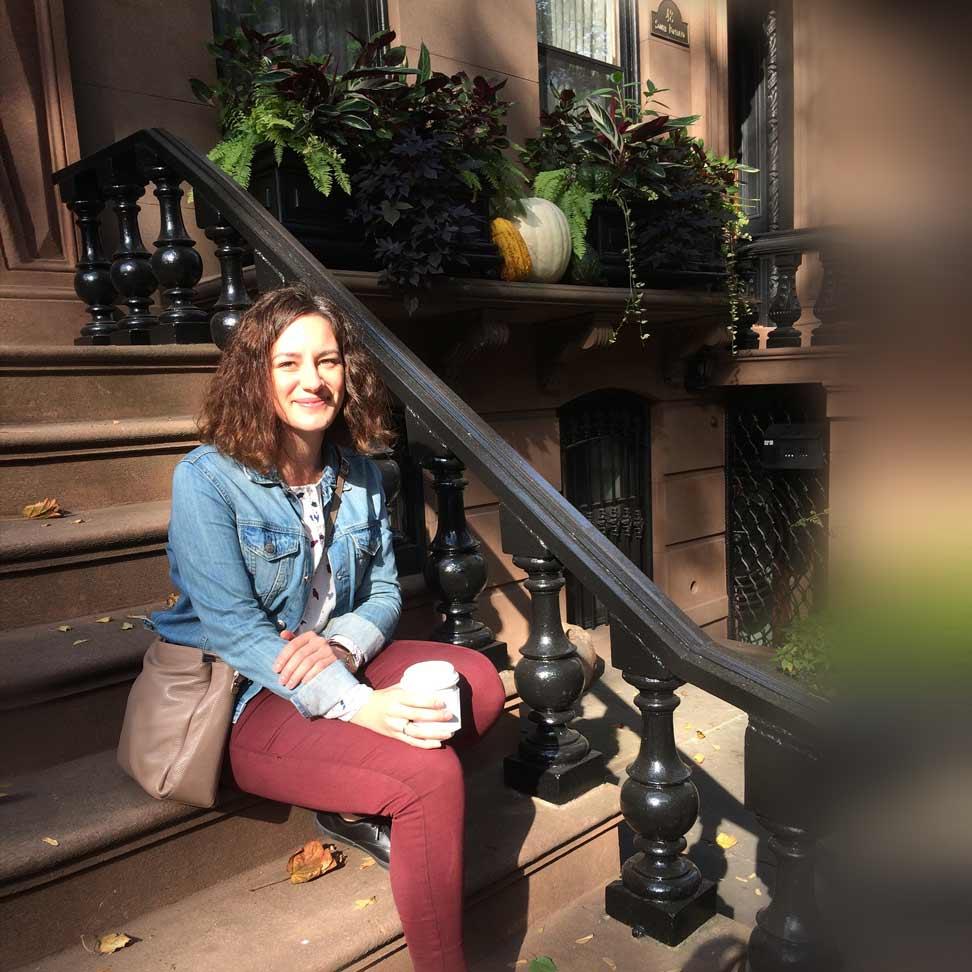National Geographic photographer Ami Vitale has spent the past 18 years travelling from country to country, telling one story at a time. Whether it’s social unrest in Asia, the last northern white rhinos in Kenya or the award-winning photo story of the world’s most iconic endangered animal, the giant panda – Ami has lived in mud huts, contracted malaria and even donned a panda suit, all in keeping her philosophy of “living the story”. Throughout the years, Ami has kept returning to the same places, engaging with the local communities. She has made it her mission to tell stories that challenge existing prejudices.
At momondo, we believe that travel opens our minds and the door to a world where our differences are a source of inspiration and development, not intolerance and prejudice. And so, we are excited to talk to Ami about her powerful work, what it truly means to be a travelling photographer and how she finds the inspiration to continue immersing herself in the stories.
Read more about our mission on our Let’s Open Our World webpage.
How did you start out as a photojournalist?
As a young woman, I was painfully shy, gawky and introverted. But when I picked up a camera, it gave me a reason to interact with people. It empowered me and, later, it became my passport to engage with the world around me. Also, I realised that it became this incredible tool for creating awareness and understanding across cultures; a tool to make sense of our commonalities in the world we share.
I began my career as an editor for the Associated Press and one day I built up the courage to quit and pursue my dream to be a foreign correspondent. I got a job at a small business newspaper in the Czech Republic and a year later quit to cover the conflict in Kosovo. Over the past 18 years, I’ve worked in about 95 countries, which makes it look like I am a travel photographer, but I don’t view my work that way. While I do travel and witness extraordinary things, it’s not simply about jetting off to exotic places. The magic really begins when I stay in one place, often years, to get beyond the surface and talk about the things that connect us all.
Could you please talk a bit about this vision of photography being “a tool for creating awareness and understanding across cultures”?
Samburu warriors, semi-nomadic pastoralists, work alongside the Reteti Elephant Sanctuary to protect the elephants living in northern Kenya © Ami Vitale
Photography has this instant ability to connect people without language. You can look at an image and instantly feel something. I’ve been on this mission to tell stories that connect people rather than simply emphasise our differences.
I started my career working for news agencies, and I would be sent into conflict zones. I’d be encouraged to show the most dramatic images, and I realised pretty quickly that we need more than the dramatic and reactive images. We need more empathy and understanding – that’s what drives me.
Your work has taken you to many different countries. Do you have a place and/or story that you found particularly interesting?
Wolong Panda Center, China: captive-bred panda bears are trained for life in the wild and this means as little human contact as possible. All caretakers wear costumes that make them look like pandas © Ami Vitale
I am passionate about all of my projects. I tend to spend years on the projects that really move me. It began with a half a year in Guinea Bissau living in a remote village in a mud hut. Next, I spent four years in Kashmir covering the conflict between India and Pakistan.
Recently, I made multiple trips over the course of three years to work on my panda project in China and finally, I’ve been working for eight years on my current project in northern Kenya about indigenous communities protecting endangered species.
All of my stories about nature and wildlife are really stories about people. And all my stories about people are really about nature. I came to that understanding after years spent covering conflicts around the globe. I realised that the conflicts I was covering were often about resources and the natural world.
How do you choose the topics and stories you want to cover?
They really choose me. They dig into my heart and won’t let go. There has to be a visual story for me to commit to it. There are great stories everywhere but sometimes they are not visual. I need them to have a universal truth and also be visually compelling.
What are you looking for in a shot?
There are lots of powerful stories to be told. Obviously, the stories about suffering and the human condition are important, but the stories which really endure are the stories about the deep human truths – the stories common among us, the things that unite us rather than the things that separate us.
How do you go about interacting with your subjects?
Muslim children sit inside the Dariya Khan Ghhumnat Rahat refugee camp set up outside a school in the state of Gujarat in Ahmedabad, India © Ami Vitale
One percent of my job is about taking photos. The rest is sheer hard work – planning, researching, editing, negotiating and finding unique ways to tell stories. The trick is to get access to places that no one else can get to, and the secret to this is to know your subject better than anyone else.
I’m a really slow photographer. I continuously go back and spend time with people. Earning trust is the most important thing. You’ve got to have people trust you enough to let you into those special moments. I spend so much time explaining why I’m doing this and why it’s important. Only after they understand that and give me access do I bring out the cameras.
What inspires you to continue pursuing these stories?
Samburu warriors touch an orphaned rhino for the first time in their lives at the Lew Wildlife Conservancy in northern Kenya © Ami Vitale
All these people and experiences changed my life – showed me all the possibilities that exist. My takeaway is that we cannot afford to view the world through an optic of fear and hate. We must work hard not to tell stories through our own paradigm of values. Unless we have empathy for those who have a different viewpoint than our own, we end up continuing to justify the existing divisions in our world.
Do you have any advice for young photographers out there?
Ami with elephant Shaba at the Reteti Elephant Sanctuary in Kenya. Shaba was collected by helicopter in 2016 after her mother had been shot dead by poachers © Ami Vitale
Don’t feel like you need to travel to a foreign country to tell a good story. I see so many portfolios that contain superficial travel images that all feel the same. You have to work on a story for years. Work on something you know well. It can be in your backyard. It allows you to be there often and cover the issue over time.
If you do want to cover a story in a foreign country, go live there and commit to the story. It’s very difficult to go deep into a story when you only parachute in and out. The biggest misconception about getting work published by National Geographic is that people feel they need to cover a foreign country for it to be interesting. That’s not how it works. Travel photography is really about intimacy and getting to know people and places.
Looking for more interviews?
- learn more about diversity, female beauty and travelling the world with Atlas of Beauty
- go behind the lens with photojournalist Timothy Allen
- explore adventure travel photography with photographer Jody MacDonald


